Cell biology, often known as cytology, is the study of cells’ structure, function, and behaviour. Because cells are the fundamental unit of life, understanding their components and operations is critical in biology, medicine, and biotechnology.
1. Cell Structure
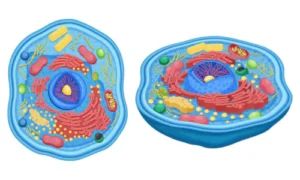
Cells can be broadly categorised into two types:
- Prokaryotic cells – Simple cells without a nucleus (e.g., bacteria).
- Eukaryotic cells – Complex cells with a true nucleus and membrane-bound organelles (e.g., plant and animal cells).
Every cell is surrounded by a cell membrane (plasma membrane) that regulates the entry and exit of materials. Plant cells also have a cell wall made of cellulose, providing rigidity and support.
2. Cell Organelles and Their Functions
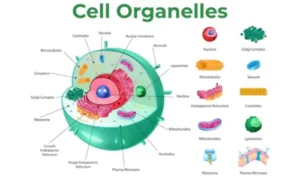
- Nucleus – The control centre of the cell, containing DNA and regulating genetic information.
- Mitochondria – Known as the powerhouse of the cell, they generate ATP through cellular respiration.
- Ribosomes – Sites of protein synthesis.
- Endoplasmic Reticulum (ER)
Rough ER: Covered with ribosomes, it helps in protein production.
Smooth ER: Involved in lipid synthesis and detoxification.
- Golgi Apparatus – Modifies, packages, and transports proteins and lipids.
- Lysosomes – Contain digestive enzymes to break down waste.
- Chloroplasts (in plant cells) – Sites of photosynthesis, containing chlorophyll.
- Vacuoles – Storage organelles for water, nutrients, and waste.
- Cytoplasm – Gel-like fluid where organelles are suspended.
3. The Cell Cycle
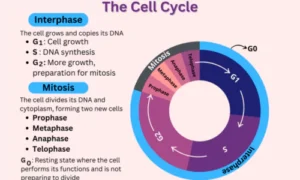
The cell cycle is the process by which cells grow, replicate DNA, and divide. It has two main phases:
Interphase – Cell growth and preparation (includes G1, S, and G2 phases).
- G1 phase: Cell growth.
- S phase: DNA replication.
- G2 phase: Preparation for division.
Mitotic phase (M phase) – Actual cell division.
4. Mitosis – Cell Division for Growth and Repair
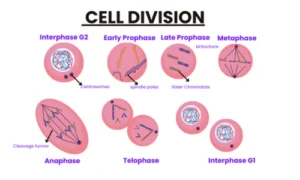
Mitosis is the process by which a diploid cell divides into two identical diploid daughter cells. It occurs in somatic (body) cells and is crucial for growth and repair.
Phases of Mitosis:
1. Prophase – Chromosomes condense, spindle fibres form.
2. Metaphase – Chromosomes align at the equator.
3. Anaphase – Sister chromatids are pulled apart.
4. Telophase – Nuclear membrane reforms, chromosomes uncoil.
5. Cytokinesis – Cytoplasm divides, forming two cells.
5. Meiosis – Cell Division for Reproduction
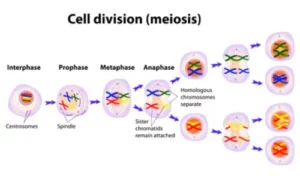
Meiosis is a special type of cell division that produces gametes (sperm and egg cells). It reduces the chromosome number by half, ensuring genetic diversity.
- Meiosis I – Homologous chromosomes separate.
- Meiosis II – Sister chromatids separate (similar to mitosis).
Result: Four non-identical haploid cells with half the number of chromosomes.
Conclusion
Cell biology lays the groundwork for comprehending all living things. Every aspect, from microscopic cell structure and organelles to the intricate processes of the cell cycle, mitosis, and meiosis, contributes to life’s survival. These mechanisms not only support development and repair but also assure the survival of life through reproduction.






